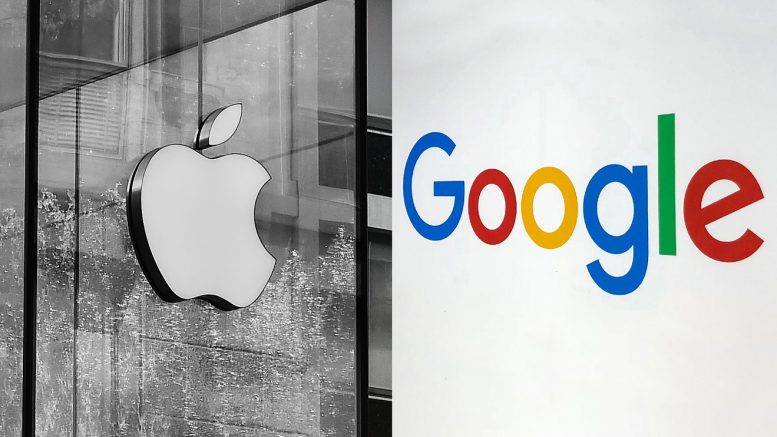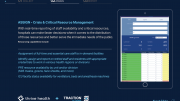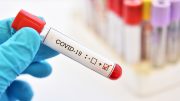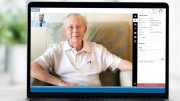Various contact tracing solutions are being offered to monitor and contain potential new outbreaks. Who gets the data, and how is it collected? While most solutions use smartphone apps as their source of information, others use human tracing. They are all falling short. A far better solution would utilize mobile networks themselves to save lives by providing an early warning to people who might be infected – with strict ways to protect privacy.
On August 5, the state of Virginia was the first state to introduce the new Google/Apple COVID-19 tracing app, called COVIDWISE. With a population of roughly 8.5 million in Virginia (2019 data), and 450,000 downloads of Virginia’s new COVIDWISE app as of 8/29, how long do you think it will take for Virginia’s digital contact tracing to reach an effective number of downloads to be considered effective?
The app has rolled out to Alabama, Arizona, Nevada, North Dakota, Wyoming and will be launched in Pennsylvania and South Carolina as well. All with the same anticipated results–mediocre at best.
COVID-19 has presented the world with new controversies. With high mortality and infection rates and no vaccine, most world governments were forced to adopt various levels of quarantine while hunting for tools for early contact tracing. While these actions managed to contain and reverse the rate of infections and deaths, the shutdown of entire local and global commercial ecosystems led to unprecedented financial loss. Governments who have executed exit strategies to reignite their economies are seeing infection rates rise. They need tools to safeguard against these additional, increasing waves of infections.
According to the World Health Organization, “It is essential to identify and trace the close contacts of every confirmed or probable case and quarantine and monitor them for 14 days. This ensures that even pre-symptomatic cases (and potentially asymptomatic cases) that arise as a result of contact with a confirmed case do not mix with the general population.”
MIT’s Technology Review says Iceland, which had an unprecedented 40% penetration of its tracing app, didn’t see much of a difference in effective tracking. However, tracking a person’s movement using a device is still a necessity and needs to be addressed by local governments, as they attempt to find a compromise between the potential invasion of privacy and the risk of lives lost if the data is unattainable.
The global prevalence of the mobile phone, along with its integrated location-reporting technologies, make it the preferred tool for a monitoring system to rely on. Unfortunately, most of the existing tracking solutions are app-based, requiring voluntary download. Not only does this automatically reduce their efficacy, but also means people with low-grade mobile devices or completely without them aren’t tracked at all – neglecting the most vulnerable populations, such as seniors and low-income groups, who are already at very high risk.
The optimal digital solution would be a network-based, non-intrusive external solution, pulling radio data at short intervals from the mobile operator, analyzing it, and creating alerts and reports in real time and retrospectively.
It would not require any installation at the mobile operator network and would not burden or influence the mobile operator’s service level in any way. Moreover, and most importantly, this solution, operating in compliance with relevant privacy regulations, would provide the most encompassing monitoring umbrella to assist in early detection of new infections and prevent further infections.
Monitoring, of course, brings us back to the privacy aspect, the elephant in most decision makers’ rooms. People feel uneasy about the privacy of downloading a tracking app.
To limit the potential invasion of privacy, several steps must be implemented within the contact tracing mechanism. Anonymization of data prevents the identification of a specific person. Wiping out the collected data after a determined number of days ensures that the data is not used for other purposes.
Storing and transferring the data within highly secured frameworks and limiting access to trusted parties only for the specifically designated purpose are prerequisites.
Furthermore, the solution must only be implemented and activated based on user consent or as part of a highly regulated situation, such as the WHO declaring a pandemic. The solution would need to expire at a pre-set end date.
The optimal COVID-19 tracker should be network-based and must:
- Track all devices regardless of operating system, non-voice communication protocols, and GPS availability
- Accomplish a “Zero Day Activation,” which would start the tracking process for all devices simultaneously
- Provide real-time and hindsight contact tracing
- Analyze mobile operators’ data external to the mobile network
- Report and alert independently
- Use anonymization of data collected to prevent the identification of individuals; it tracks and analyzes the device’s movement only
When Opt-Ins are required, whether by App or in responding to a Human Tracer, the rate of cooperation is way below what is necessary to track the virus. So is COVIDWISE likely to work? Unfortunately Virginia, to be successful, you’re going to need more than an App.
By Arik Brabbing Harris – Former Head of the Cyber Division at Israel’s Security Agency – Shin Bet





